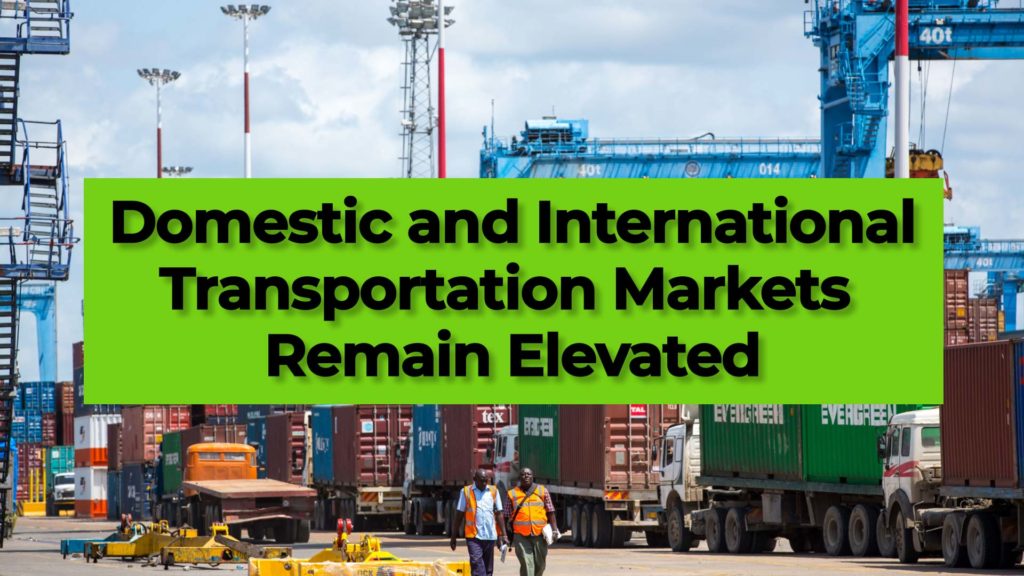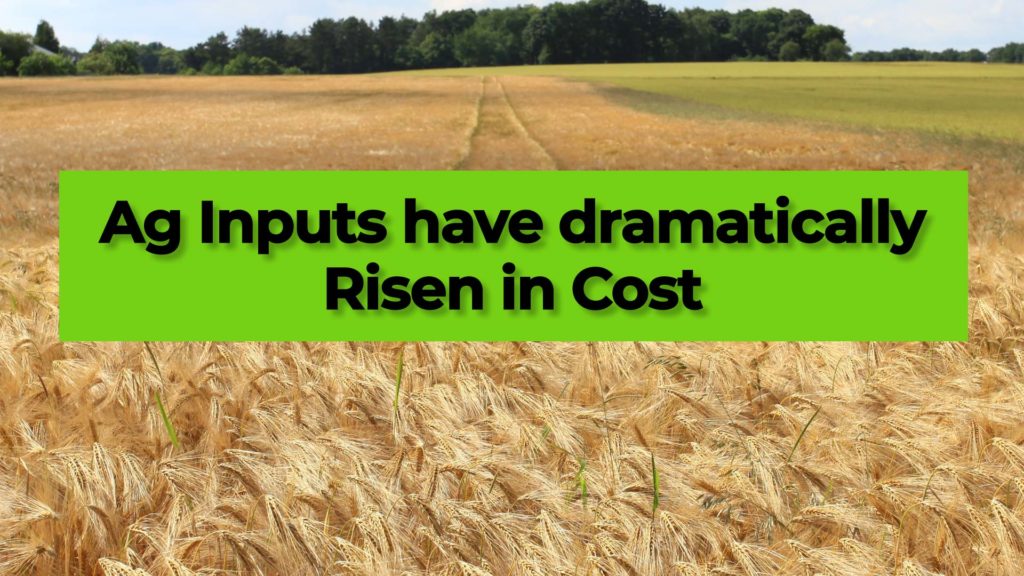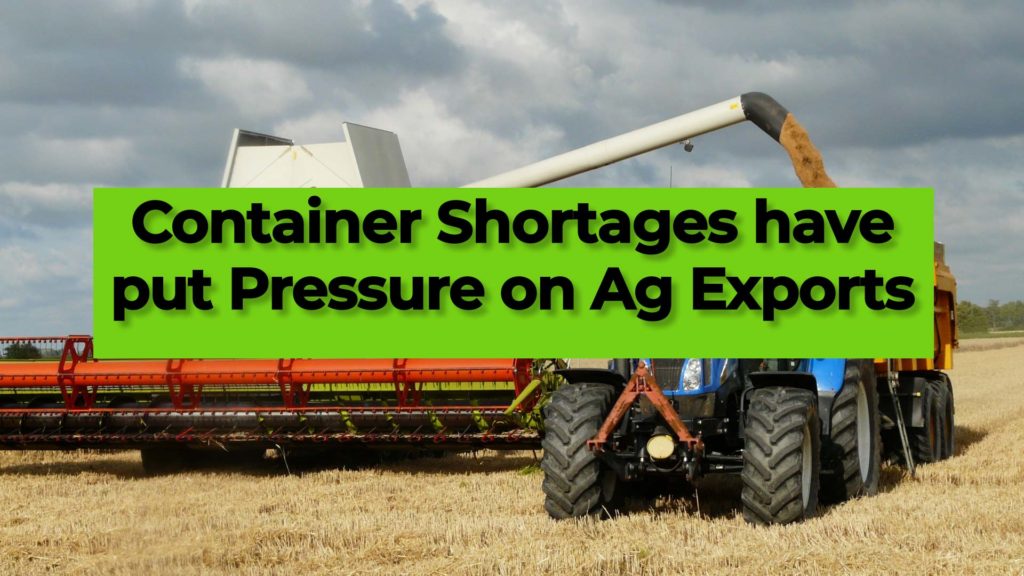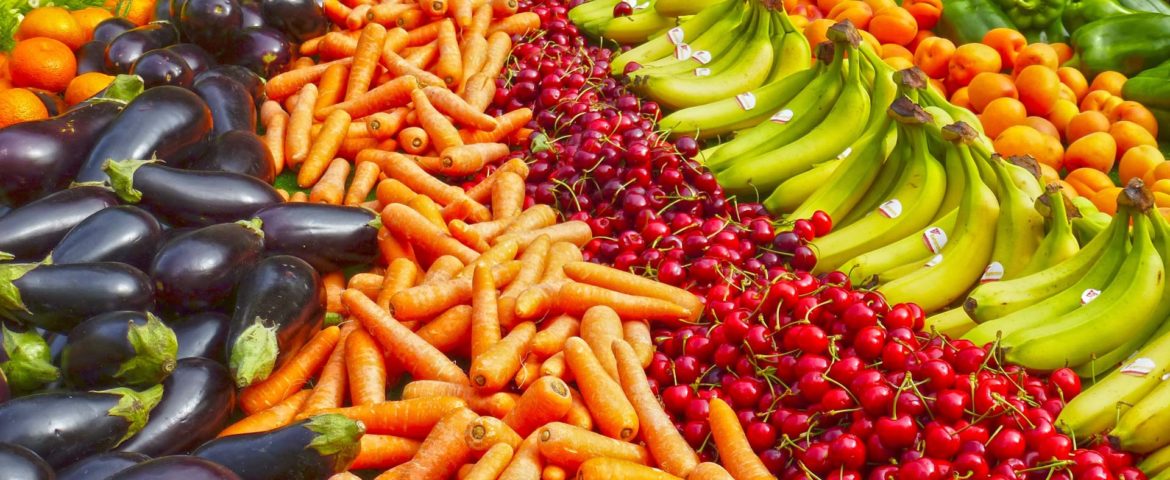Like any industry, the global agriculture industry has faced significant disruption due to the ongoing covid-19 pandemic. Whether due to input shortages like fertilizer, machinery part shortages or due to covid outbreaks in processing facilities and distribution centers, the agriculture industry has faced major challenges in the last two years.
Let’s first touch in more detail on some of the challenges that ag supply chains have faced
High Transportation Costs
Anyone who ships LTL or truck freight is well aware the shipping prices for transportation are extremely high vs rates in 2019. While the transportation market is largely supply and demand, the dramatic shutdown much of the world experienced in early 2020, led to drivers and carriers curtailing routes and shuttering service options. Following this, a widely unexpected wave of e-commerce demand meant there was simply not enough transportation capacity to move the quantities. This in addition to an unbalanced global shipping network due to ocean carriers’ service changes meant that prices rapidly rose if not doubled in certain situations.

Higher shipping costs can drive down margins on any business, but with already low margins in the agriculture industry, and sometimes unavailable shipping containers to move exports, farms face major hurdles to maintain profitable operations.
High Cost of Inputs
Due to the widespread disruption described above, key inputs like fertilizer, pesticides, and even tractors are much more expensive now than in 2019.
Like the used car market, a lot of farm machinery has risen in price. While you might think of ag equipment as old and simple, nothing could be further from the truth for commercial operations. Modern precision farming equipment relies on GPS control, computer-optimized delivery of chemicals and seeds, with a significant amount of computing power on tractors and combines. The microchip shortage has affected the farm equipment manufacturers just like it has major auto brands, which then drives up the cost of used machinery.
Fertilizer prices have risen between 25-50% depending on locations and specific chemicals from 2019 through mid-2021. Fertilizer price increases are due to increased demand with a lowered supply curve due to the pandemic which has affected raw material costs like ammonia, and sulfur and limited factory production.

Digital Solutions
Increasingly supply chains of all types have integrated more digital solutions into their operations and planning than ever before. With data recording and analytics becoming easier to utilize, additional more equipment produces data than before.
Monitoring input prices and transportation for farms and ag companies has become much easier with digital supply chain partners that let shippers leverage past data to drive future planning.
Lane specific price data is important to allow both farms and other agriculture to better plan their financial models and try to reduce costs through various optimization strategies.
Many shippers who have only traditionally shipped via LTL have started consolidating shipments and using full truckload freight providers due to the reduction in cost per unit of transported goods or raw materials. Almost without fail, FTL will provide better service times than LTL due to the inherent hub and spoke model of LTL freight companies.
Fragmentation and Agriculture Supply Chain Risk
Both the greater supply chain industry and the agriculture industry are heavily fragmented, which means that specific geographic regions, shipping routes, individual products, and inputs can fluctuate wildly in price and availability.
Planning your agriculture business’s supply chains in a way to rely on one or two major suppliers or transportation partners introduces more risk into your overall company.
Supply chains are putting a newfound emphasis on supply chain resiliency and mitigating supplier risk, principally through working with a greater number of partners for different needs.
Even with transportation, utilizing a mix of LTL, FTL, and intermodal can reduce overall costs while providing better service and more capacity.
The popularity of long-term bid transportation contracts is also at risk as the transportation markets, both international and domestic have become so volatile and risen so much, that signing major long-term contracts at current price levels could result in massively overpaying for freight if and when the markets eventually soften. Within the transportation industry itself, the popularity of short-term contracts – 1-6 months, have become more popular, as has to rely more heavily on spot market freight.

Intermodal as a Transportation Option
Intermodal, which utilizing railroads for the long haul portion of the route, then first and last-mile trucking in combination with containers is a much more cost-efficient alternative to long haul road trucking.
For many agricultural firms, container shipping is more associated with international rather than domestic shipping, but domestic intermodal with 53ft containers is a great way to lower shipping costs on cross-country shipping demand and increase available capacity in tight markets.
Cross-country intermodal shipping and long haul intermodal shipping are anywhere from 10-30% less costly on shipping lanes longer than 500 miles with the largest savings and best service intervals between larger metropolitan areas.
Intermodal when introduced into your supply chain can reduce risk and costs.
Food and Processed Goods
As we all saw throughout parts of 2020, it doesn’t take much for grocery demand to outweigh its supply, particularly so when any disruption is introduced into the supply chain, whether upstream of the processing points or at the distribution and production phases.
The new clips of covid outbreaks in food processing plants directly translated to higher meat prices and seeing empty shelves more often.
Maintaining a safe work environment where covid transmissions are minimized has a direct impact on a firm’s bottom line and revenue generated.
As vaccines become more readily available and used, it’s likely that individual companies within the food and beverage industry could strongly suggest that workers receive the vaccines just as a method to maintain their operations and keep products flowing.
Seasonal demands for produce also drive region-specific pricing spikes, a great example is produce season in southern California and Florida. Preparing well ahead of time with a variety of carriers and transportation options should be a core procedure in order to minimize the risk of not find trucks or paying substantially over-market rates.
Want a free lane and cost savings analysis? – Get in Touch!
Zmodal is a top intermodal shipping company providing door-to-door intermodal, and full truckload services nationwide throughout our digital supply chain dashboard which provides easy route searching, booking, document management, and analytics. CONTACT US if you want to lower your supply chain costs or want access to North American intermodal capacity.



